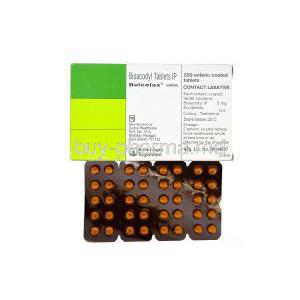Prucalopride
- I. Introduction
- II. Composition
- III. Uses
- IV. Off-Label Use
- V. How it Works
- VI. Dosage and Administration
- VII. Side Effects
- VIII. Interaction
- IX. Warning and Contraindication
- X. Careful Administration
- XI. Important Precautions
- XII. Administration in Special Populations
- XIII. Overdosage
- XIV. Storage
- XV. Handling Precautions
I. Introduction
Prucalopride is seen as a treatment for specific gastrointestinal issues, standing out for its focused effectiveness and support from regulatory bodies. After development and testing, this medication was approved by the FDA, signaling a significant step forward in gastroenterology. Its role in managing idiopathic constipation and similar conditions is vital, providing a ray of hope for individuals dealing with these challenging disorders.
II. Composition
- Prucaloprides' effectiveness lies in its component, a specialized serotonin type 4 (5 HT4) receptor agonist, setting it apart from other treatments due to its unique specificity and mode of operation.
- Different formulations of Prucalopride have been developed to enhance bioavailability and make it easier for patients to follow the treatment catering to the diverse needs of individuals seeking its benefits.

III. Uses
Prucalopride is also used to manage motility disorders. It selectively stimulates 5-HT4 receptors, presenting enterokinetic properties. In animal studies, prucalopride induced a dose-dependent stimulation of contractile activity in the proximal colon and inhibition of contractility in the distal colon. Additionally, it stimulates and amplifies giant migratory contractions, which are high-amplitude contractions that initiate the urge to defecate1.
IV. Off-Label Use
Although Prucalopride is commonly prescribed for approved purposes, it's also being used off-label for conditions like functional constipation in children and irritable bowel syndrome with constipation (IBS C). This off-label practice is backed by a growing amount of research and real-life examples that show how Prucalopride can be beneficial in gastroenterology cases.
V. How it Works
Prucalopride boosts the system's movement through targeted activation of serotonin type 4 receptors. This helps improve bowel function and tackles the underlying issues behind constipation and similar motility problems. Research comparing Prucalopride to drugs that enhance gut movement has demonstrated its superior effectiveness and safety, solidifying its position in gastrointestinal treatment.
VI. Dosage and Administration
The suggested amount of Prucalopride for grown-ups is customized to achieve the treatment outcomes while minimizing potential risks. Specific attention is paid to how the medication is given to senior expectant mothers, breastfeeding moms, and youngsters, emphasizing the importance of a nuanced strategy for these groups. The manner and timing of administration also significantly impact the drug's efficacy and patient compliance.

VII. Side Effects
- Nausea, vomiting, and diarrhea
- Stomach pain, bloating, and gas
- Headache and dizziness
- Feeling tired 1
VIII. Interaction
When Prucalopride interacts with medications, it can impact how well the body absorbs and processes it, which may affect how effective and safe it is. It's also important to take into account how food and lifestyle choices can play a role in treatment management, ultimately aiming for the results for patients.
IX. Warning and Contraindication
- Do not use prucalopride if you have a blockage in your intestines, Crohn’s disease, ulcerative colitis, or intestinal perforation.
- Inform your doctor if you have a history of kidney disease, depression, or suicidal thoughts.
- Prucalopride is not approved for use in individuals younger than 18 years old 1.
X. Careful Administration
Administering Prucalopride requires monitoring to guarantee patient safety and achieve the best treatment results. This involves checking the heart function in vulnerable patients. Additionally, it is essential to make adjustments for those with kidney and liver issues since these conditions can greatly impact how the drug works in the body.
XI. Important Precautions
In order to reduce the chances of side effects, medical professionals need to be aware of any unusual heart symptoms or strong stomach reactions that could indicate possible issues, it's crucial to have guidance on using medications for an extended period and how to stop them gradually as suddenly stopping could result in withdrawal symptoms or worsen existing health conditions.
XII. Administration in Special Populations
When it comes to giving Prucalopride to groups of people such as the elderly, pregnant or nursing individuals, and children, it's important to customize the dosage and keep a close eye on their response. Elderly individuals might process the drug differently, so adjustments may be needed. Safety during pregnancy and breastfeeding is crucial due to the transfer of the drug through the placenta or breast milk. Using Prucalopride in children requires considering its benefits compared to any possible risks.
XIII. Overdosage
In cases of taking much medication, patients might experience symptoms that vary from severe stomach discomfort to heart-related irregularities. Healthcare professionals must have access to emergency protocols and antidote details in order to respond quickly, minimize outcomes, and avoid potential long-lasting issues.
XIV. Storage
It's crucial to store Prucalopride to keep it effective. Things like temperature, humidity, and light exposure can impact how well the medication works. Following the recommended storage and disposal instructions is key, to avoiding using expired drugs and protecting the environment.
XV. Handling Precautions
It's crucial for healthcare providers to follow safety protocols to reduce the chance of exposure or medication mistakes. Equally important is educating patients thoroughly on how to use and store medications, giving them the knowledge to handle their treatment responsibly and securely.






















